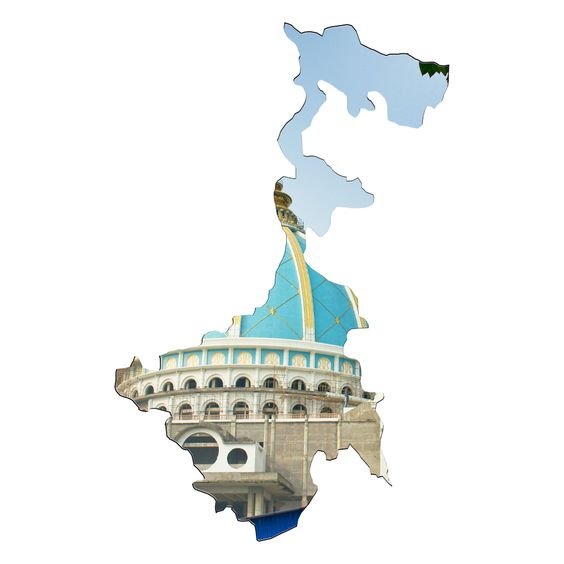
West Bengal, a state known for its rich cultural heritage and historical significance, is currently grappling with a concerning issue: the safety of women. Despite progress in various sectors, incidents of violence against women continue to surface, raising serious questions about the efficacy of the state’s mechanisms to protect its female citizens. The recent uproar involving a video showing a woman and a man being brutally beaten up in the Chopra area of Uttar Dinajpur district underscores the deep-seated issues that plague the state. This article delves into the multifaceted reasons behind the unsafe environment for women in West Bengal, examining socio-cultural dynamics, political influences, law enforcement challenges, and systemic failures.
Recent Incident in Chopra
The video that surfaced showing a woman and a man being beaten up by a purported TMC worker in the Chopra area of Uttar Dinajpur district has drawn significant attention. The incident highlights not only the physical violence inflicted but also the socio-political underpinnings that exacerbate such situations. The woman in the video was labeled an “evil beast” by Chopra MLA Hamidul Rahaman, who justified the violence by citing her “unsocial activities” and adherence to a supposed local code of justice. This response reflects a broader issue where victim-blaming and societal norms often overshadow the pursuit of justice.
Political Influence and Impunity
Political dynamics in West Bengal play a crucial role in the perpetuation of violence against women. The ruling party, Trinamool Congress (TMC), has often been accused by the opposition of fostering a culture of impunity among its workers. The recent incident in Chopra, where the accused was alleged to be a close associate of a local TMC leader, underscores the potential complicity and protection extended to perpetrators by those in power. Such political shielding can significantly hinder the enforcement of laws and embolden individuals to commit acts of violence without fear of repercussions.
Socio-Cultural Dynamics
The cultural landscape in many parts of West Bengal is still heavily influenced by patriarchal norms and traditional values that often marginalize women. In the Chopra incident, the woman’s actions were deemed “unsocial,” leading to her public beating. This reflects a societal mindset where women’s behavior is closely monitored and controlled, often leading to harsh punishments for perceived transgressions. The concept of ‘Salishi Sabha’ or kangaroo courts, where village elders or local leaders decide on punishments, further exacerbates this issue by bypassing formal legal channels and perpetuating archaic forms of justice.
Law Enforcement Challenges
The efficacy of law enforcement in protecting women in West Bengal is another critical concern. Despite laws designed to safeguard women’s rights, the implementation and enforcement of these laws often fall short. In the Chopra case, police action was reportedly initiated only after the video went viral on social media, indicating a reactive rather than proactive approach. This delay in response can be attributed to various factors, including political pressure, lack of resources, and ingrained biases within the police force.
Systemic Failures
The systemic failures that contribute to the unsafe environment for women in West Bengal are multifaceted. These include inadequate legal protections, insufficient support systems for victims, and a lack of awareness and education about women’s rights. The judiciary, while empowered to deliver justice, often faces delays and backlogs that can deter victims from seeking help. Additionally, social stigmatization and fear of retribution prevent many women from reporting incidents of violence, perpetuating a cycle of silence and victimization.
Impact on Women’s Lives
The impact of such violence on women’s lives is profound and far-reaching. Beyond the immediate physical and psychological trauma, women who are victims of violence often face long-term consequences such as social ostracism, economic hardship, and disrupted family structures. The stigma associated with being a victim of violence can lead to further marginalization, limiting access to education, employment, and social support networks.
Steps Towards Improvement
Addressing the issue of women’s safety in West Bengal requires a comprehensive and multi-pronged approach. Key measures that need to be undertaken include:
- Strengthening Legal Frameworks: Ensuring that laws protecting women are robust, well-publicized, and strictly enforced is crucial. This includes implementing stricter penalties for perpetrators and ensuring timely and effective legal recourse for victims.
- Political Accountability: Holding political figures and parties accountable for the actions of their members is essential. This involves removing political protection for perpetrators and ensuring that justice is served impartially.
- Awareness and Education: Educating the public about women’s rights and the importance of gender equality can help shift societal attitudes. Campaigns aimed at dismantling patriarchal norms and promoting respect for women are vital.
- Empowering Women: Providing women with the tools and resources to protect themselves and seek justice is critical. This includes establishing support centers, helplines, and legal aid services specifically for women.
- Community Involvement: Engaging community leaders and local organizations in the fight against violence can foster a supportive environment for women. Initiatives that promote community vigilance and collective responsibility can deter potential perpetrators.
- Enhancing Law Enforcement: Training police and judicial officials to handle cases of violence against women with sensitivity and urgency can improve the response to such incidents. Establishing dedicated units within the police force to deal with crimes against women can also be beneficial.
The safety of women in West Bengal remains a pressing issue that demands immediate and sustained attention. The recent incident in Chopra is a stark reminder of the challenges that women face in the state, compounded by political, social, and systemic barriers. Addressing these challenges requires a concerted effort from all sectors of society, including the government, law enforcement, community leaders, and the public. By taking comprehensive measures to protect and empower women, West Bengal can move towards becoming a safer and more equitable state for all its residents.
ALSO READ: Is the United Kingdom Bankrupt? What to Know





